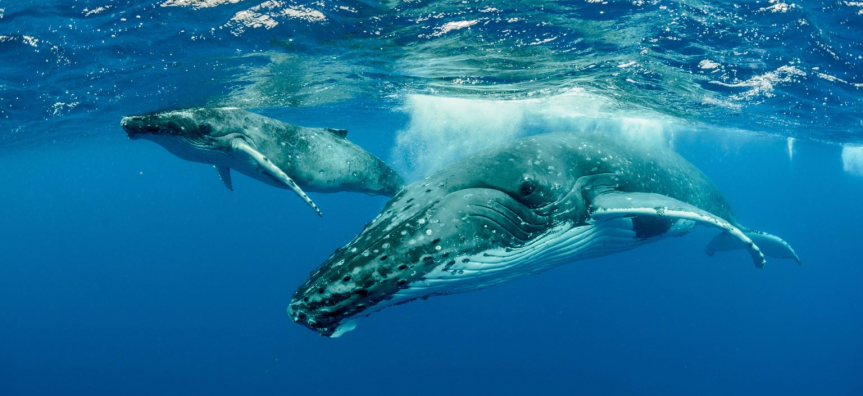Spring is almost upon us, with humpback whales now starting to make their southbound journey, after mating and giving birth in the warmer waters of sunny northern Queensland.
For us on the Northern Beaches, we’re part of the ‘Humpback Highway’, with thousands of majestic creatures visible just off our coastline.
There are over 40 species of whales that travel through Aussie waters each year, but if you're spotting from our headlands it'll most likely be a humpback or a southern right whale.
Out at sea and on land, you’ll get some great views - particularly good vantage spots are Manly’s North Head, the top of Long Reef headland, Curly boardwalk and Barrenjoey Lighthouse. You’ll need to be patient – take a blanket, thermos and binoculars if you have them and settle in.
Whale spotting tips for spotting:
- Head out on a clear day
- Look for the blow, particularly on still days when the plume can hang in the air
- On windy days whales tend to breach more often
- Look for a big splash (which probably means you just missed a whale breaching)
- Keep an eye on deeper waters, you'll have a better chance of a whale breaching because they need depth of water to gain the momentum to get up and breach out of the water.
Why do whales breach?
It takes a lot of energy for a whale to breach, they're a 30-45 tonne mammal and can jump sometimes completely out of the water, so why do they do it?
According to experts there are a range of theories as to why whales breach. They may be communicating to other whales across vast distances, trying to attract other whales (including a mate), warning off vessels or other mates, cooling off, removing parasites such as barnacles, or just playing.
For everything you need to know about the annual whale watching season visit NSW National Parks website.

